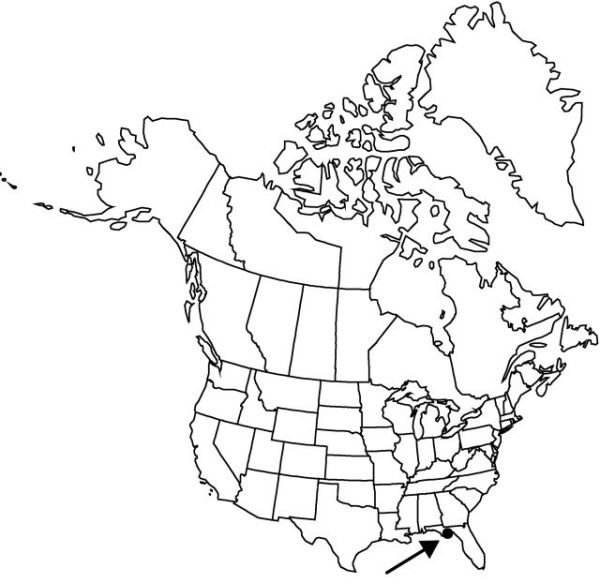Hymenocallis franklinensis
Novon 11: 235, figs. 1, 5, 6. 2001.
Bulb rhizomatous, narrowly ovoid, 2.5–4 × 2–3.5 cm; basal plate 1–2 cm; neck 3.5–7 cm; tunic grayish brown. Leaves deciduous, 3–5, nearly erect, 2.8–4.8 dm × 1.8–2.7 cm, coriaceous; blade lustrous green, liguliform, distinctly channeled, apex acute. Scape 3–4.5 dm, 2-edged, glaucous; scape bracts 2, enclosing buds, 3–4.5 cm × 10–15 mm; subtending floral bracts 2.5–4.5 cm × 5–12 mm. Flowers 2–3, opening sequentially, moderately fragrant; perianth tube green, 6.5–9 cm; tepals slightly ascending, white, tinged green on keel, 8.8–11.5 cm × 5–7 mm; corona white with small, yellowish green proximal eye, funnelform at full anthesis, then spreading with age, shortly tubulose proximally, 3–4 × 4–5.5 cm, margins between free portions of filaments with irregularly dentate projections; free portions of filaments inserted on flat sinal base, suberect, white, 2.5–3.5 cm; anthers 1.5–1.8 cm, pollen golden; ovary ovoid, 1–1.5 cm × 5 mm, ovules 2–3 per locule; style green in distal 1/2, fading to white proximally, 14–17 cm. Capsules subglobose, 2–2.5 × 2–2.5 cm. Seeds obovoid, 1.6–2 × 1.2–1.5 cm. 2n = 43, 44.
Phenology: Flowering early–mid spring.
Habitat: Alluvial margins of slightly brackish rivers and streams
Elevation: 0 m
Discussion
Hymenocallis franklinensis is a narrow endemic of the lower Ochlockonee River system of the Florida panhandle, possibly including the Sopchoppy River. Only a few collections have been made (L. C. Anderson 13,382, 18,299; G. L. Smith, M. A. Garland & G. R. Knight 1631; G. L. Smith & L. C. Anderson 1717). The plants bear a strong resemblance to H. crassifolia. The leaves of the two species are nearly identical in form in the field and on herbarium sheets, but the flowers of H. franklinensis are larger, and the scape bracts are broader at the base and taper in the distal half.
Selected References
None.
